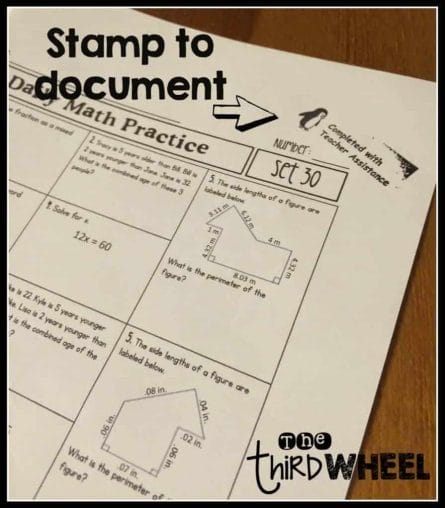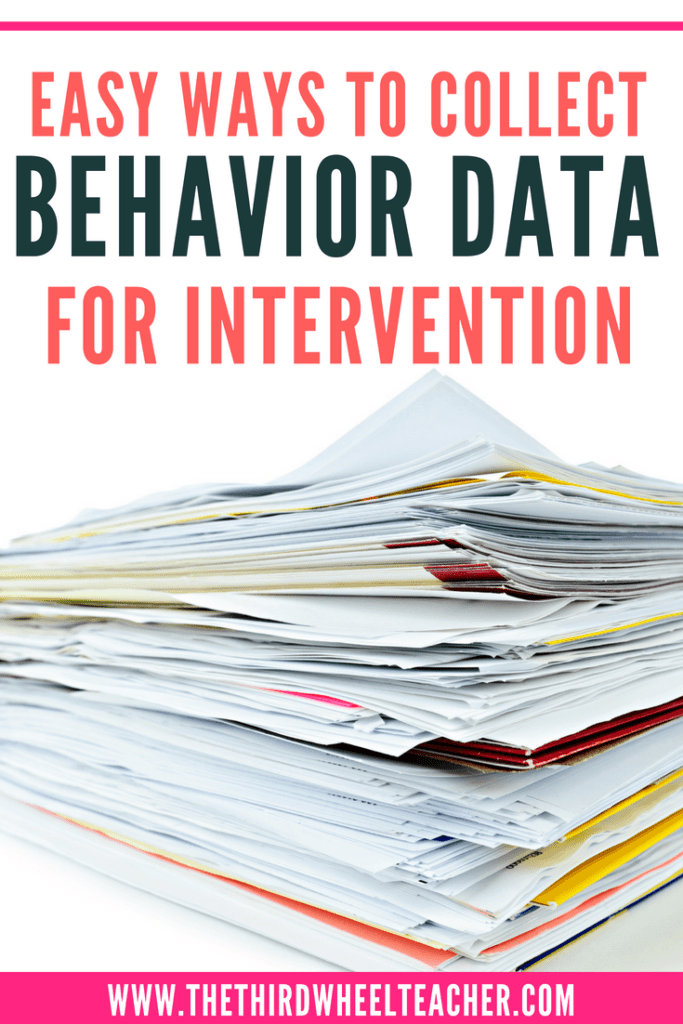4 Easy & Effective Tips for Documenting Tier 1 Interventions & Support
Documenting Tier 1 interventions and supports while you’re teaching a classroom can be really tough. However, it’s expected when you’re doing Tier 1 interventions in the classroom. Sometimes it can be challenging to identify all the extra help you provide. For example, have you ever had a kid in class who needs your support to get through the majority of the assignments, but when you look at his (or her) grades, they appear to be doing okay because:
A) you are supporting them in completing their work,
B) you are modifying and accommodating to meet their needs and/or
C) they are redoing assignments to improve their grade to passing.
Of course, being the teacher you are, you’ve been in constant communication with the family. You’re discussing adjusting your teaching to meet their child’s needs and suggesting ways to continue this support at home.
However, at some point, you come to the realization that the grades going home don’t reflect where the child is independently functioning…and the parents (or MTSS team…or whoever) are only focused on the score.
Somehow all your discussions seem to have gone in one ear and out the other, and now there are questions about why their child has performed poorly on an assessment or universal screener. The question inevitably arises as to why this child is being referred because their grades “seemed fine.”

This has happened to me more times than I can count. However, I’ve started a system that, over the last three years, has saved my students on more than one occasion. I hope that you’ll find them helpful, too!
Documenting Tier 1 Interventions & Supports: Differentiation Data Tracking
Today I will share my solutions for documenting Tier 1 supports and differentiation.
These strategies have helped me better communicate with parents about their child’s strengths and needs. They’ve also been integral in getting students the support they need via our school’s RTI system.
1. Get a stamp to document extra support.
A stamp that says “Completed with Teacher Assistance” is a MUST HAVE. You won’t believe how helpful it is.
You can get a custom stamp pretty inexpensively from VistaPrint or get one for less than $10 on Amazon – like this cheap option.
Tips for implementation – how to use it:
Stamp any assignment where you have to provide support above and beyond the norm is a way of documenting intervention data that can be quickly seen and recorded.
When you send the assignments home, parents can quickly and easily see that their child needs extra help.

Tips for implementation:
- Tell parents about this system on Parent Night so you can answer any questions they might have. This makes sure the year starts with everyone on the same page.
- Keep the stamper right near your small group area. This will make it quick and easy to stamp assignments when you pull a student or small group. It took me less than 5 seconds to document using this setup.
2. Make documenting intervention data easier with a system
Use spreadsheets to track the extra support you’re providing. At the beginning of the year, set up a template with your students’ names.
For each unit, add the objectives or key teaching points. This makes it easy to document intervention data for your Tier 1 interventions throughout the week vs. trying to play catch up when you refer a student.
How to do it:
After a pre-test, I start documenting intervention data by tracking the types of questions the kids struggle with using color coding. I used red and green to show which were already mastered and which were clearly a challenge.
When you pull a small group, record the dates in your spreadsheet. I made sure to record each date we met, and when a student had mastered a skill, I changed the objective to yellow. This let me see how many meetings it took for mastery. This also let me track when mastery wasn’t happening after numerous attempts to reteach.
Here’s an example from a place value unit a few years ago (with names changed).

It was color-coded with the red, yellow, and green codes I mentioned above. I recorded the reteach dates in each box for the related skill.
While place value is often difficult for struggling learners, using this strategy, you can clearly see who only needed minor clarification after the instruction and which students required multiple reteach sessions. You can also see who is still struggling.
3. Share information with families about the extra support you provide.
In addition to documenting intervention data, sharing this data with families is critical so there are no surprises. While these students aren’t receiving intensive individualized interventions, keeping families in the loop can be really helpful if a referral for these services eventually does happen.
You will want to track the differentiated supports you provide in your grade book or another location. This will be very important if a student is referred for support or a parent complains about their student struggling.
Grades don’t always reflect the struggle a student might be having because we provide scaffolds and extra help. Since this is the primary indicator for parents, it is important to share information about gaps in learning with them.
Tips for implementation:
I created a shorthand code to track accommodations and modifications for my general education students. This lets me quickly and easily communicate my concerns to my campus RTI team when referring a student.
If I started to see a pattern, I also started to staple a checklist to assignments so parents could get a better idea of exactly what support I was providing.
I like to include a short letter in the child’s report card reminding the parents that the grade reflects significant support. The parents should sign and return this letter. I kept these in the child’s file to refer to if questions arose.
This was great because if a parent came to a conference and said they hadn’t realized their child was struggling, I could pull it out as a reminder quickly. I could also use the letter to document that I had informed the parent before any RTI support.
To save you some time, I want to share my checklists and a copy of my report card letter. You can this parent documentation free by clicking the button below.

4. Create Student Portfolios to help you document Tier 1 interventions.
Student portfolios are a great way to keep samples of student work. They also allow you to track progress across time.
Another way I made sure I was able to advocate for my students was by including unit progress reports in my student’s portfolios. These progress reports outlined the standards associated with the unit.
I could quickly and easily complete the form for students to document their progress toward these standards. I also had space for notes and a spot for parents to sign.
Here’s an example of how I formatively assess and track progress when I document intervention data for Tier 1:

I could bring these to campus RTI meetings or discuss them during parent conferences. It also helped me track parent communication about academic concerns.
I kept these for all core subjects – reading, writing, and math.
Have more ideas for documenting intervention data in class?
There are so many ways to document the support you’re providing struggling students. These are the four that have been helpful for me.
Have another idea that works for you? Tell me – how do you document intervention data for RTI?








